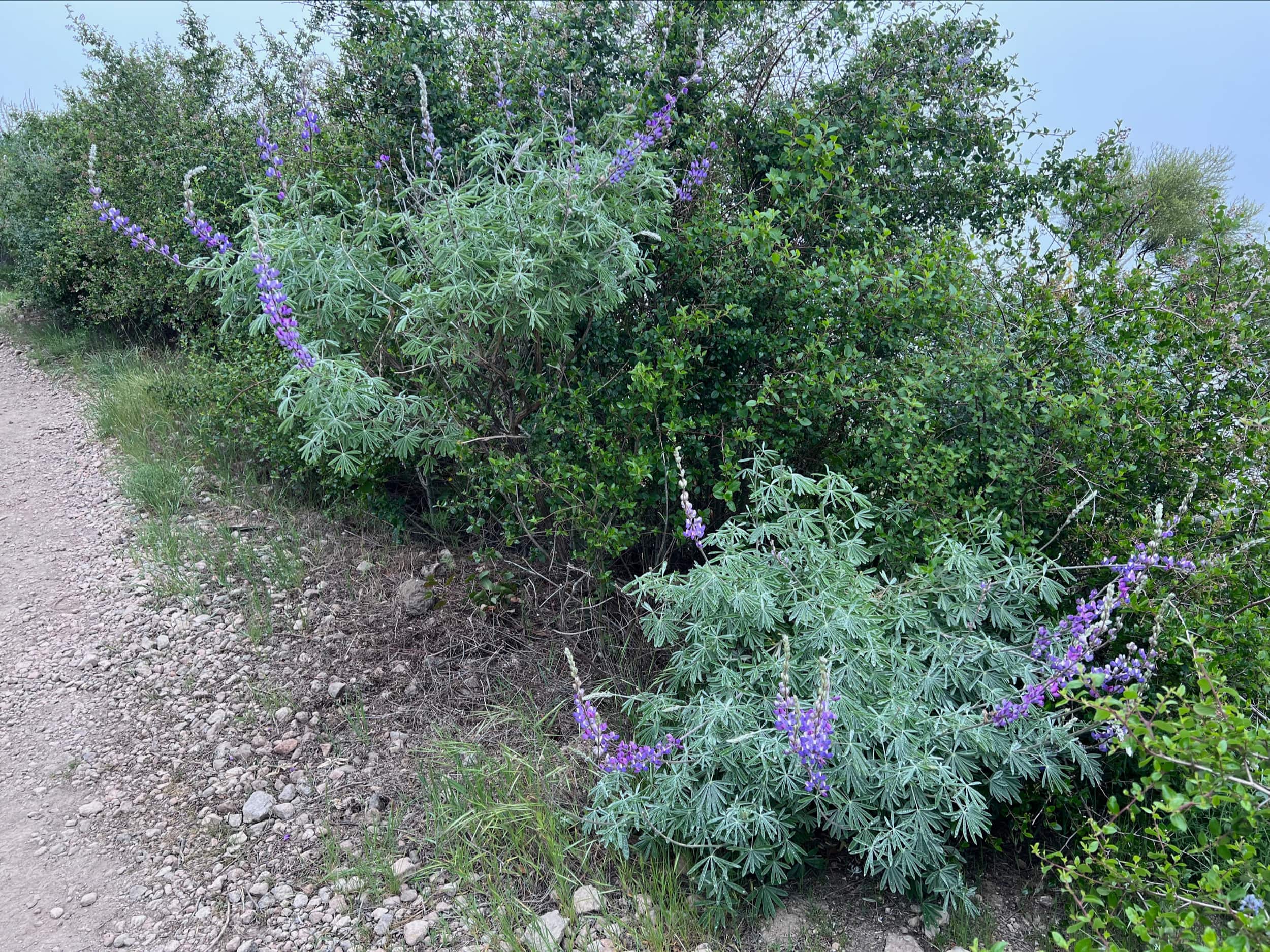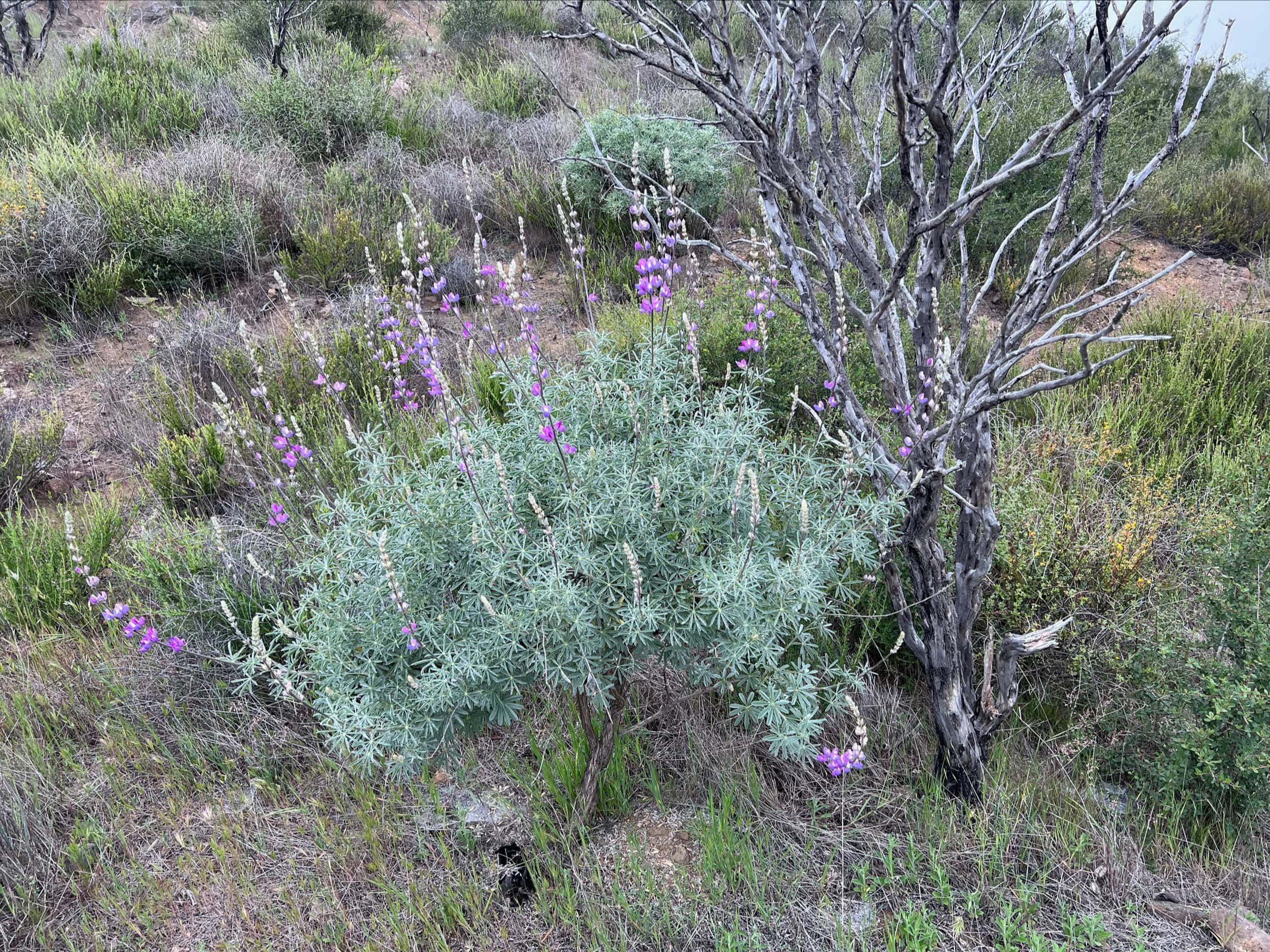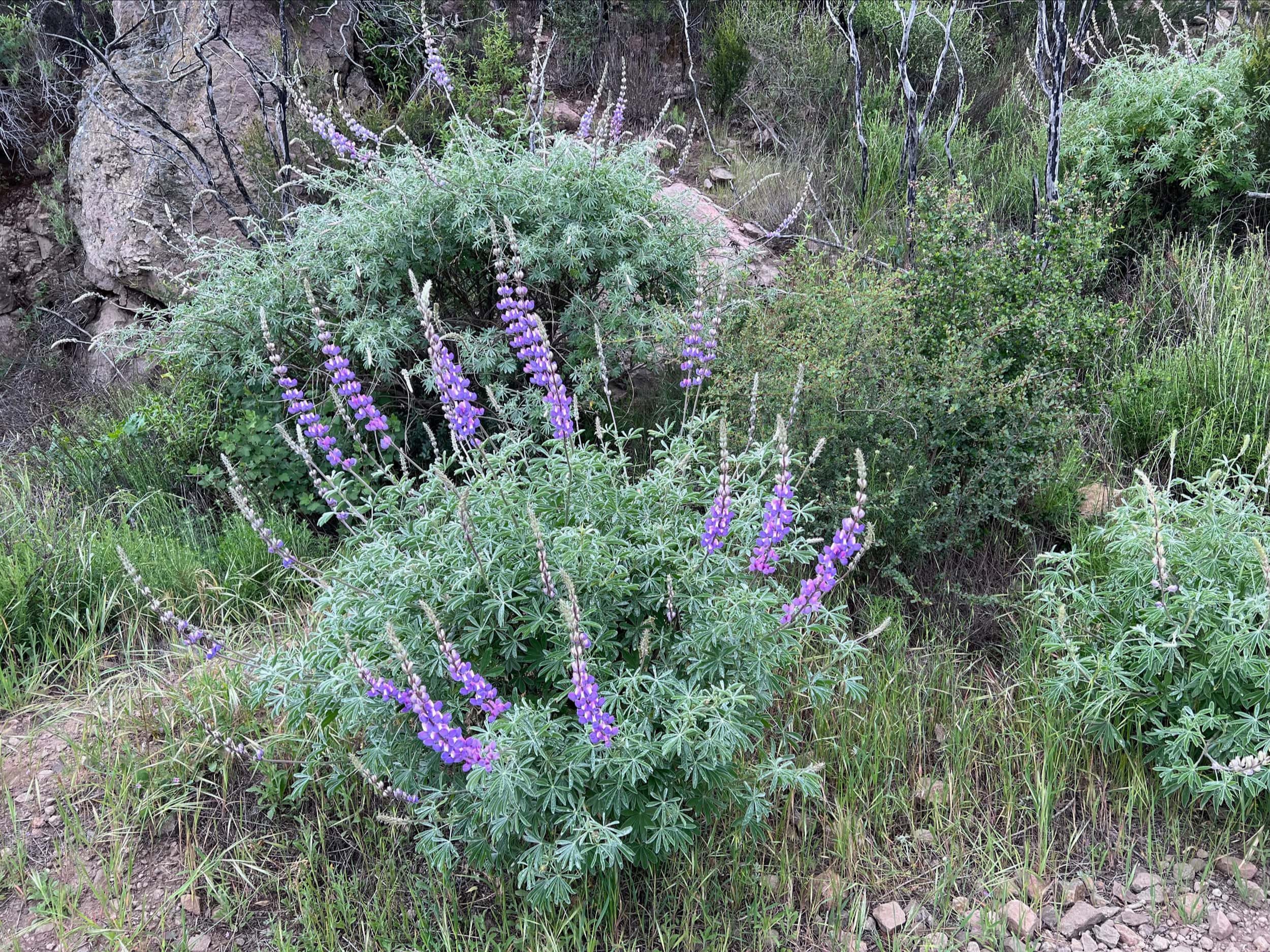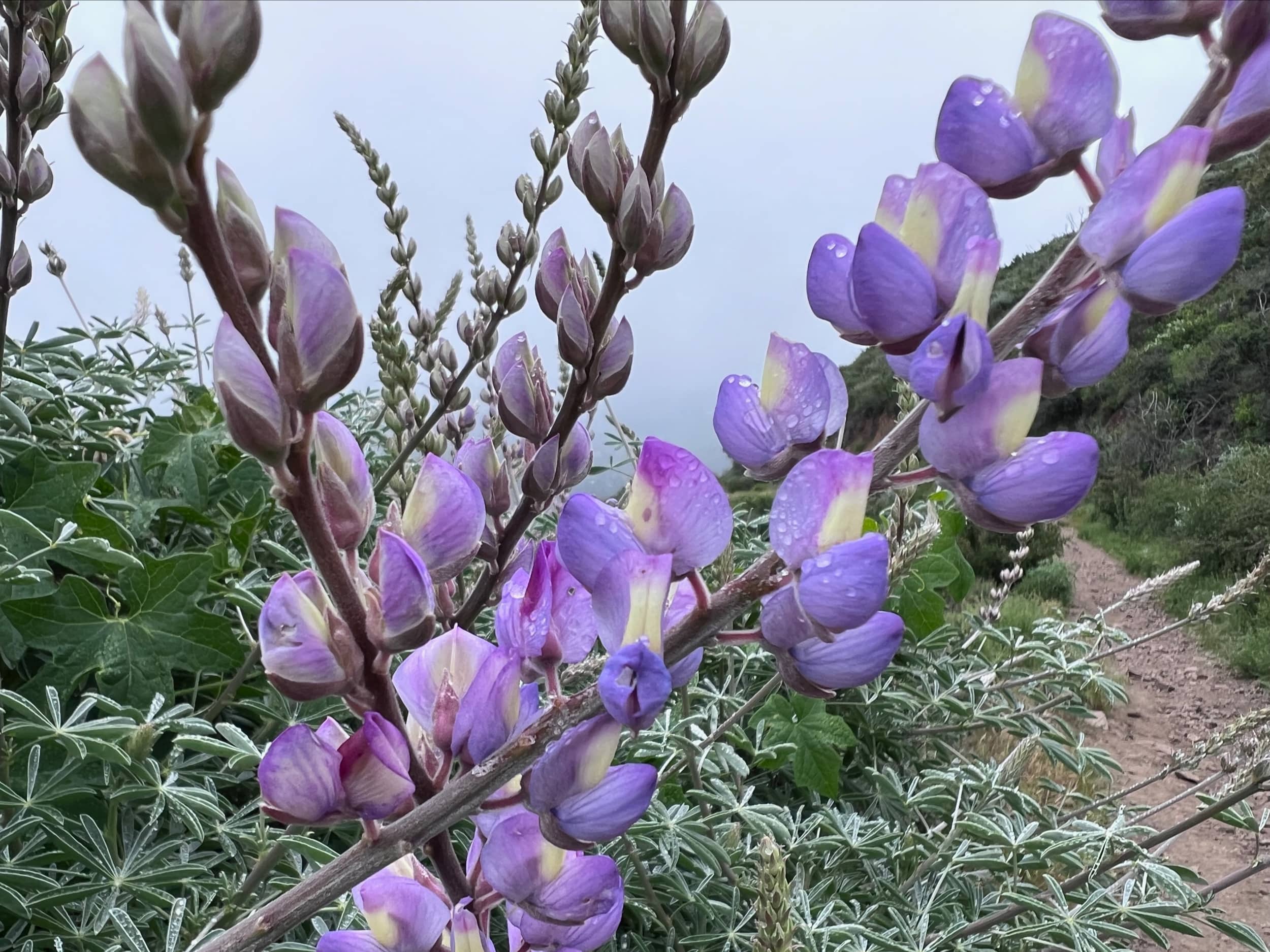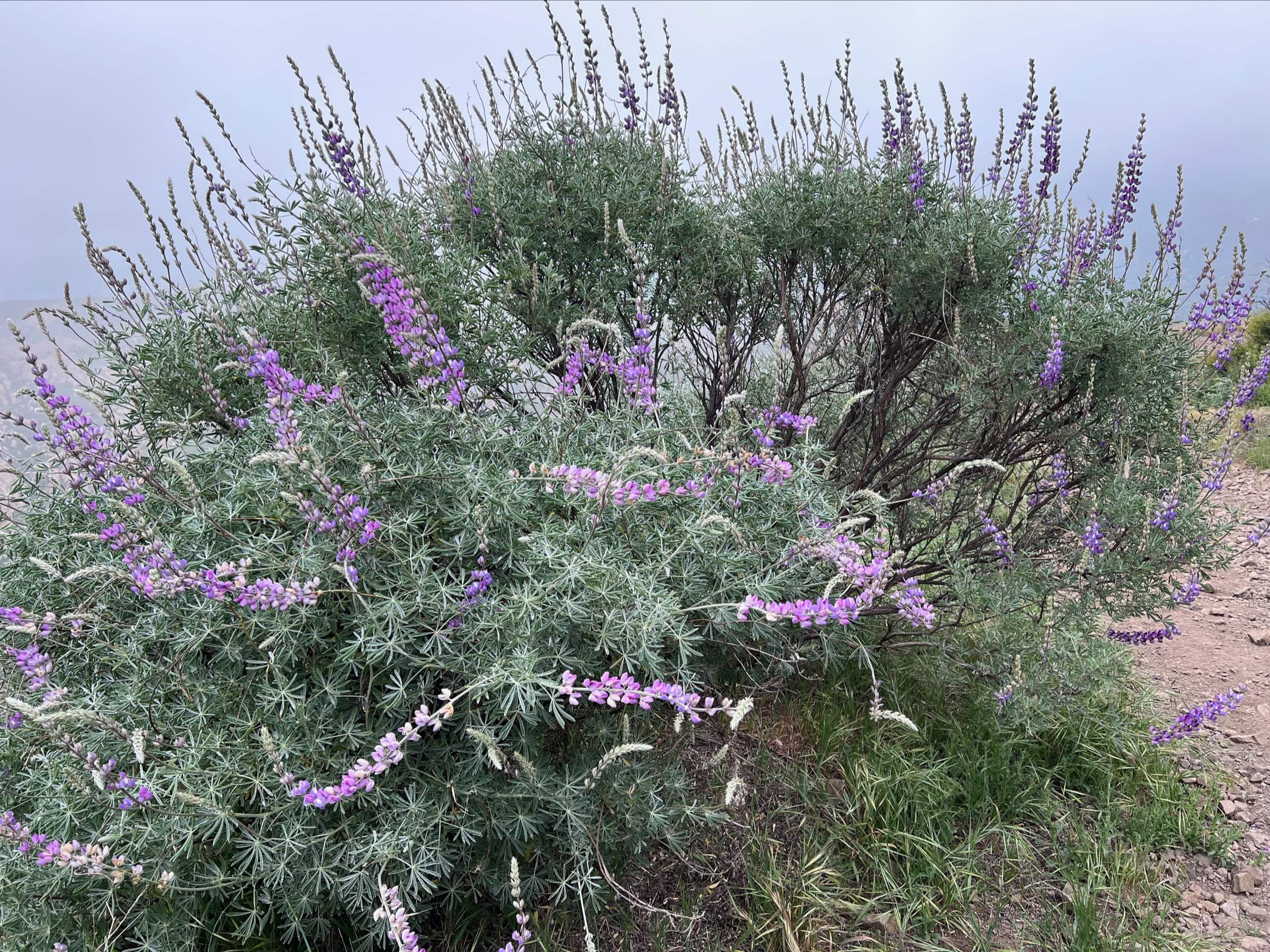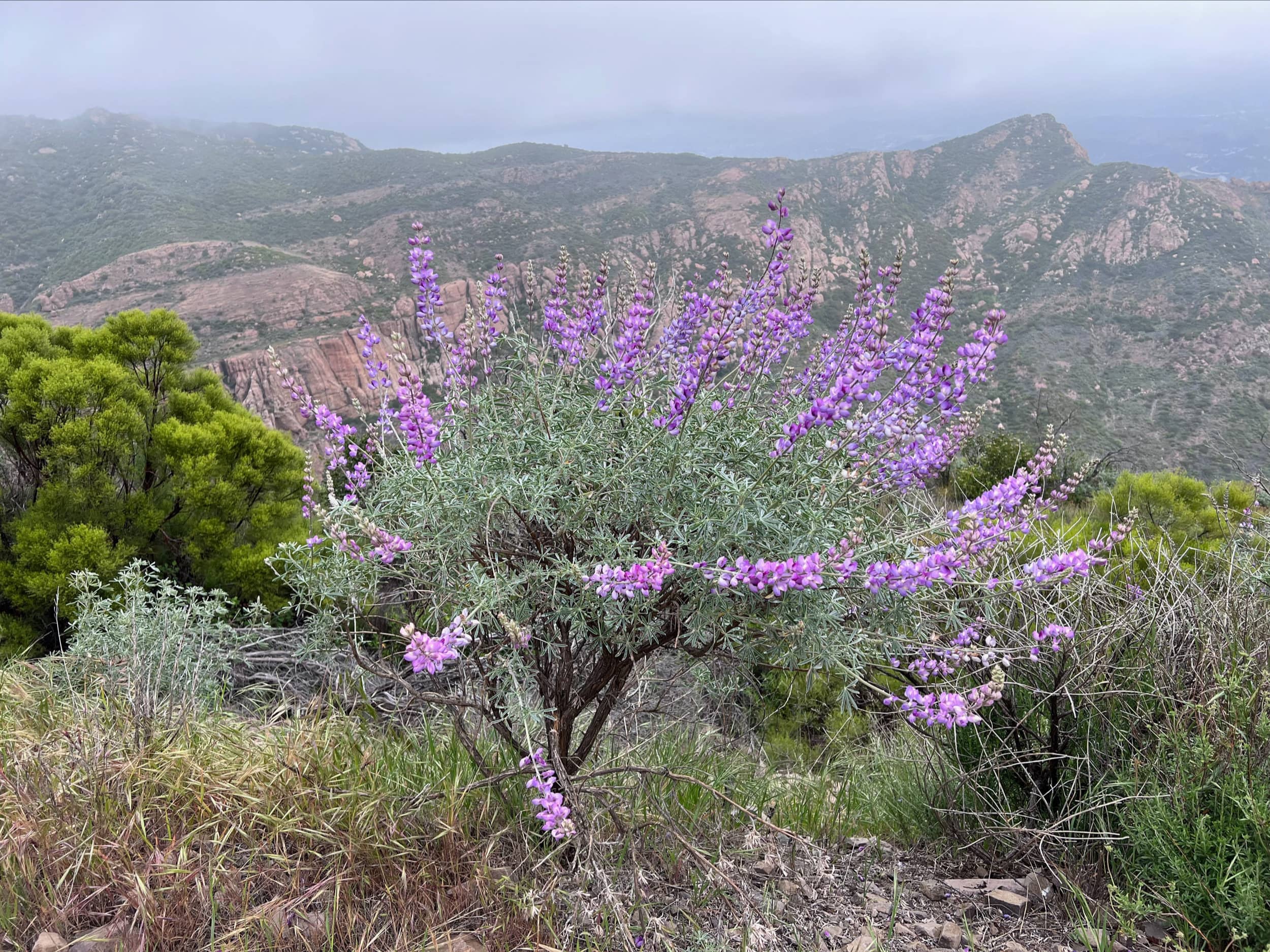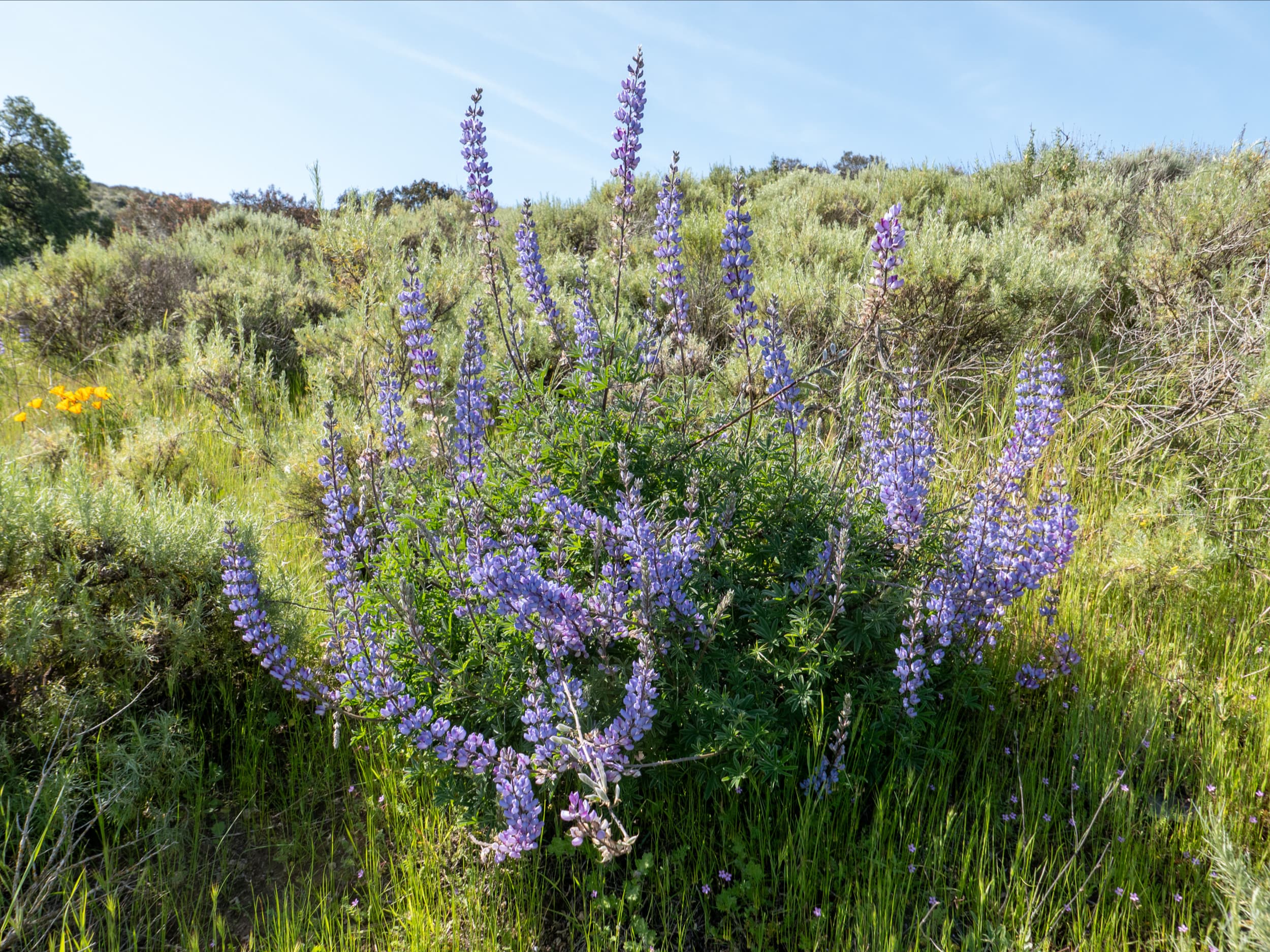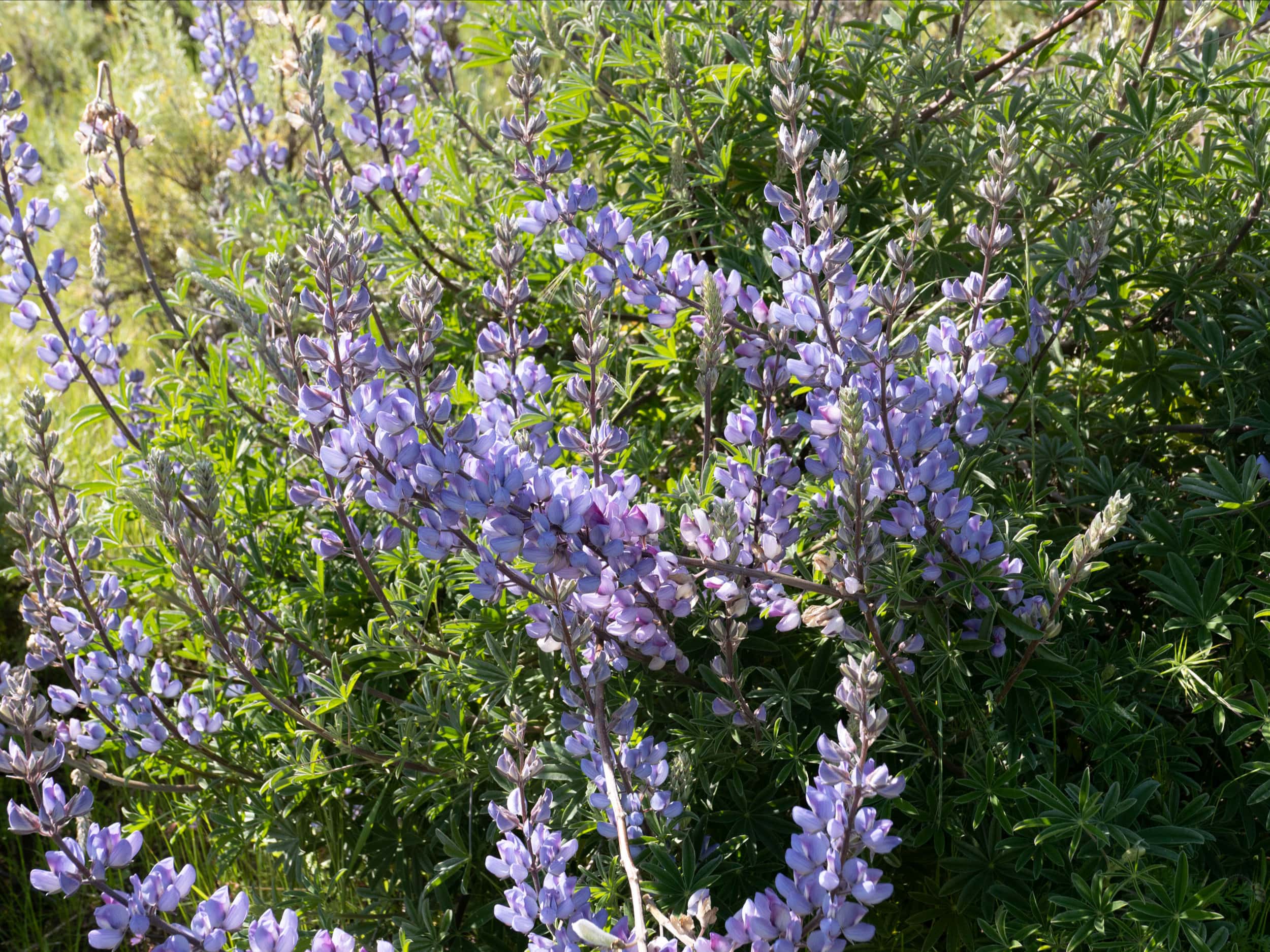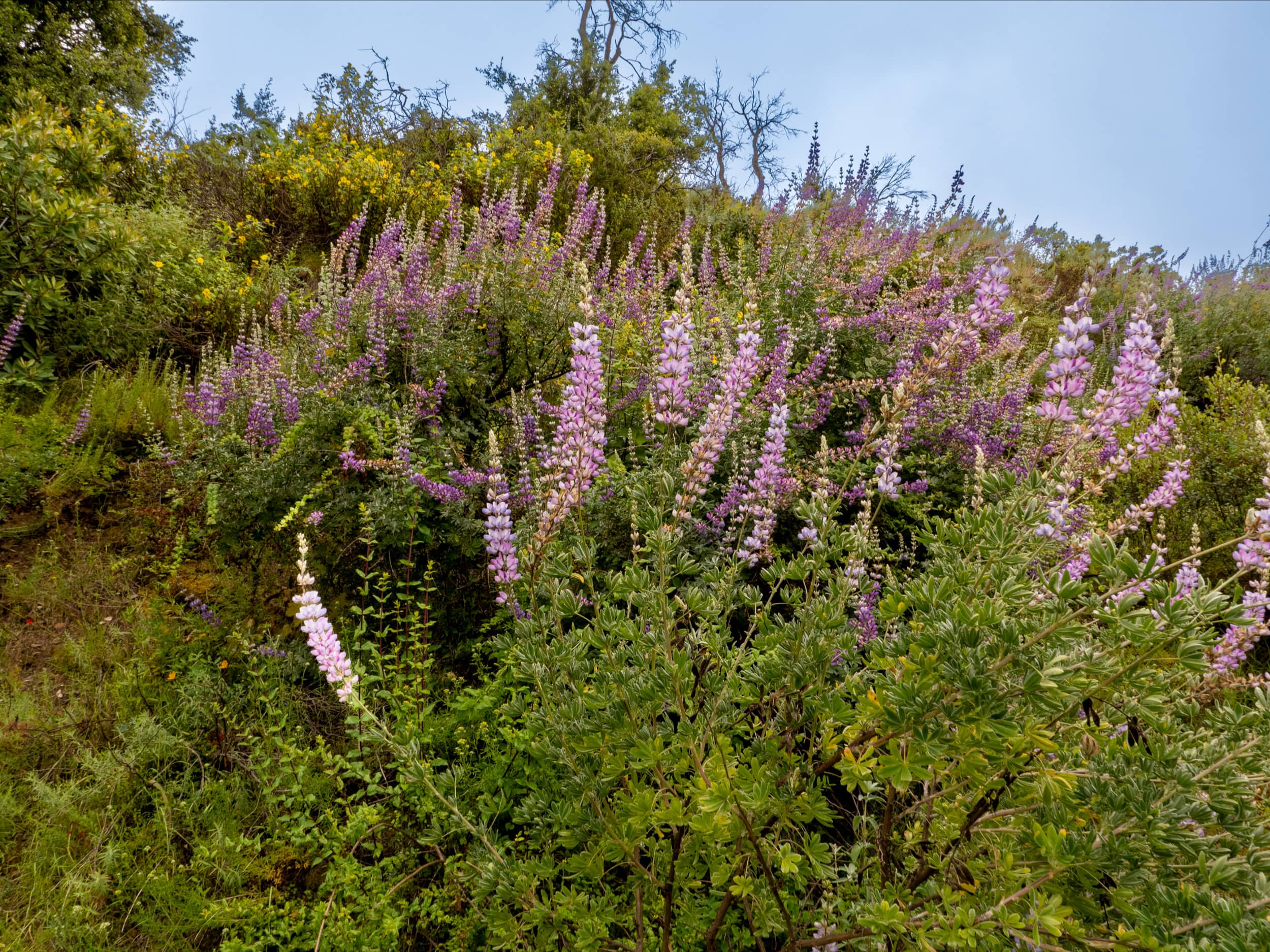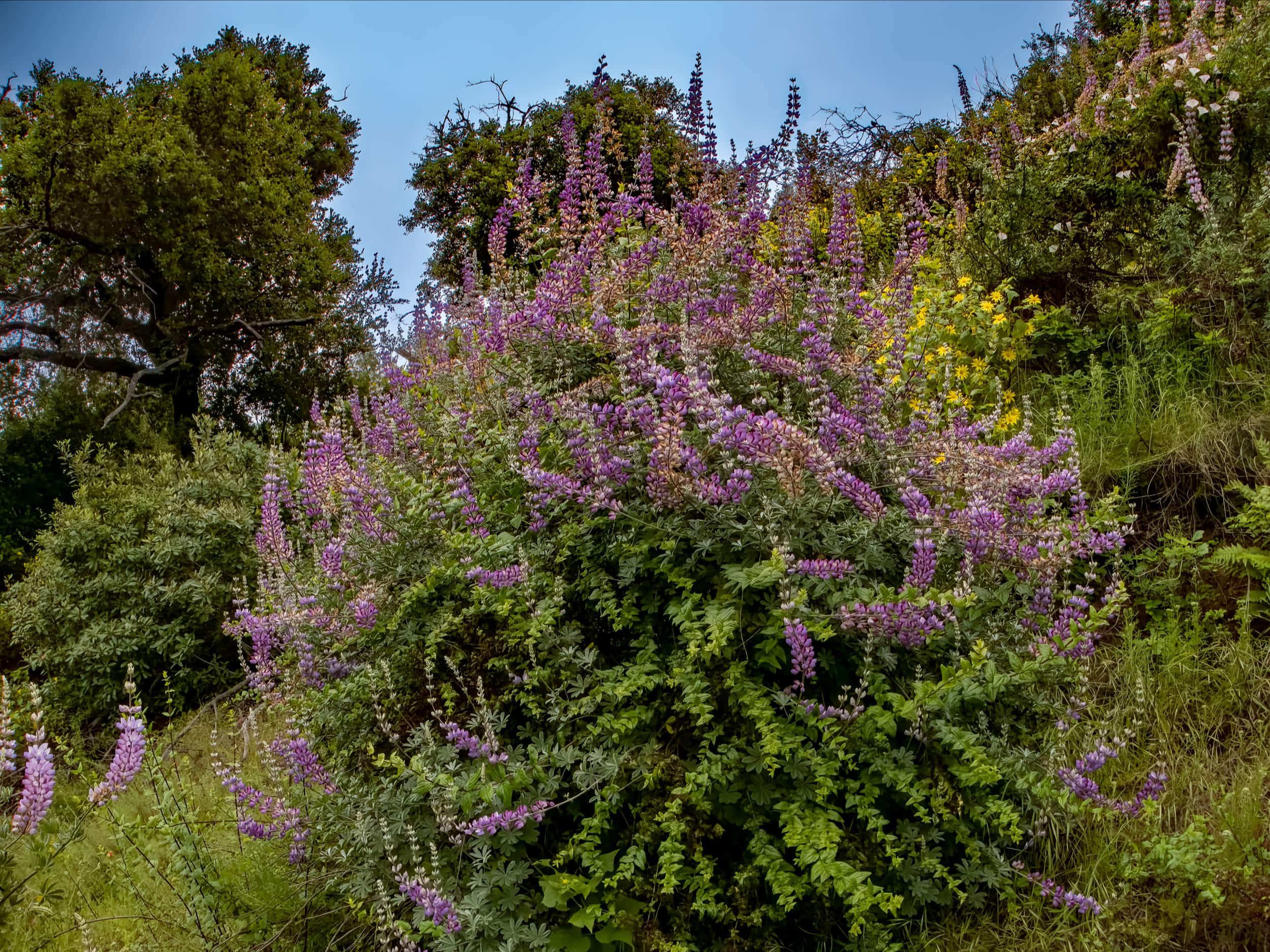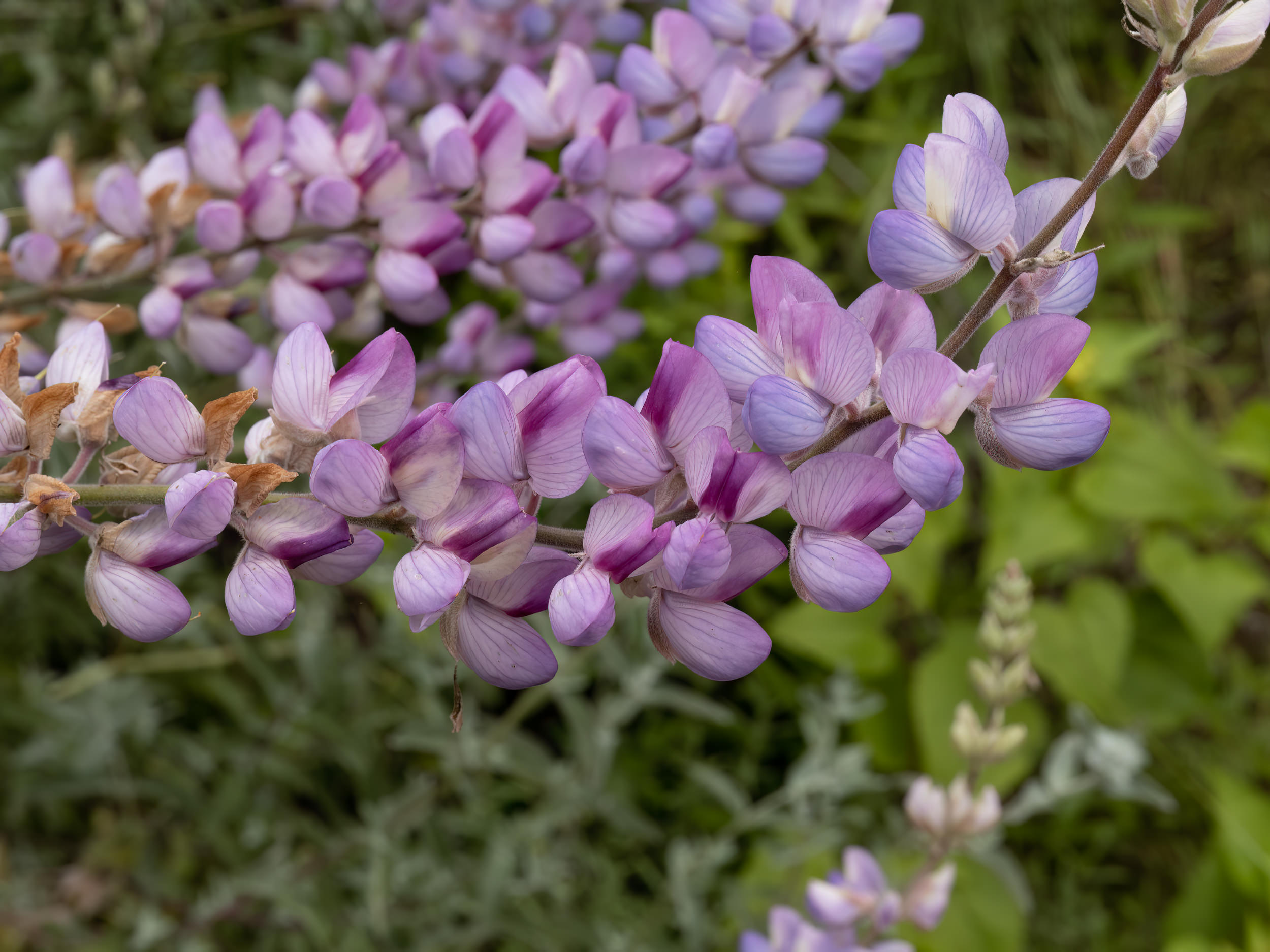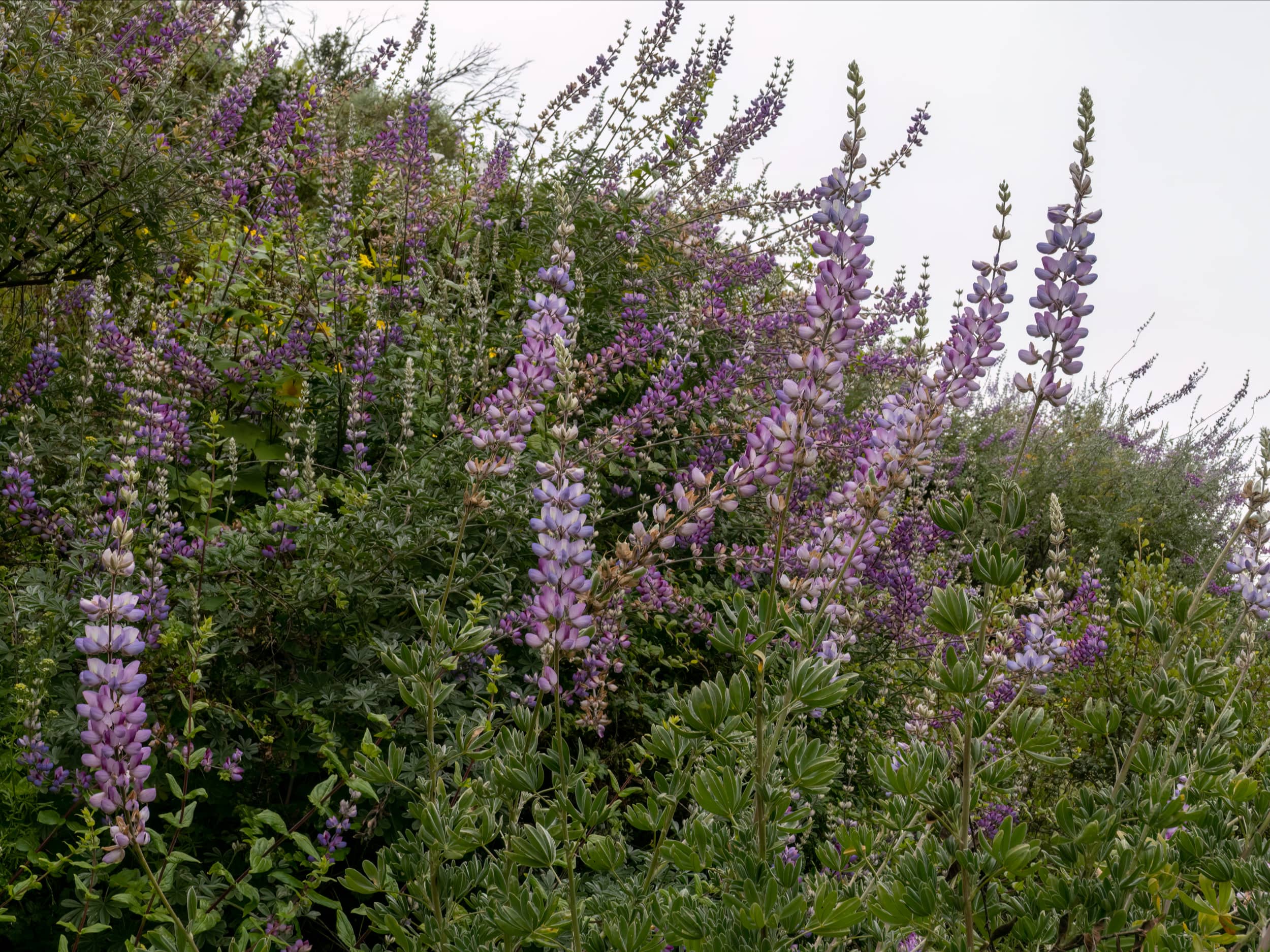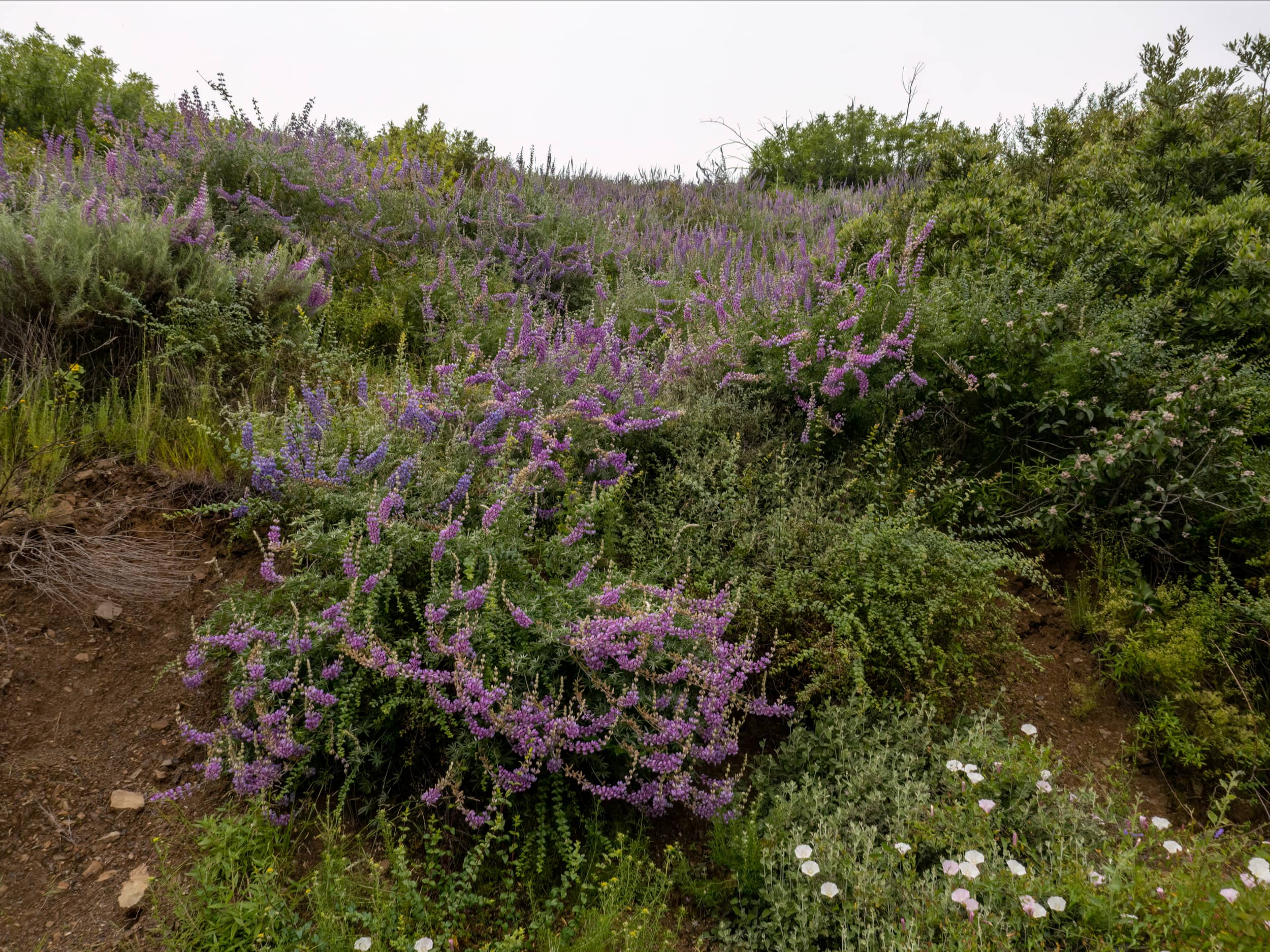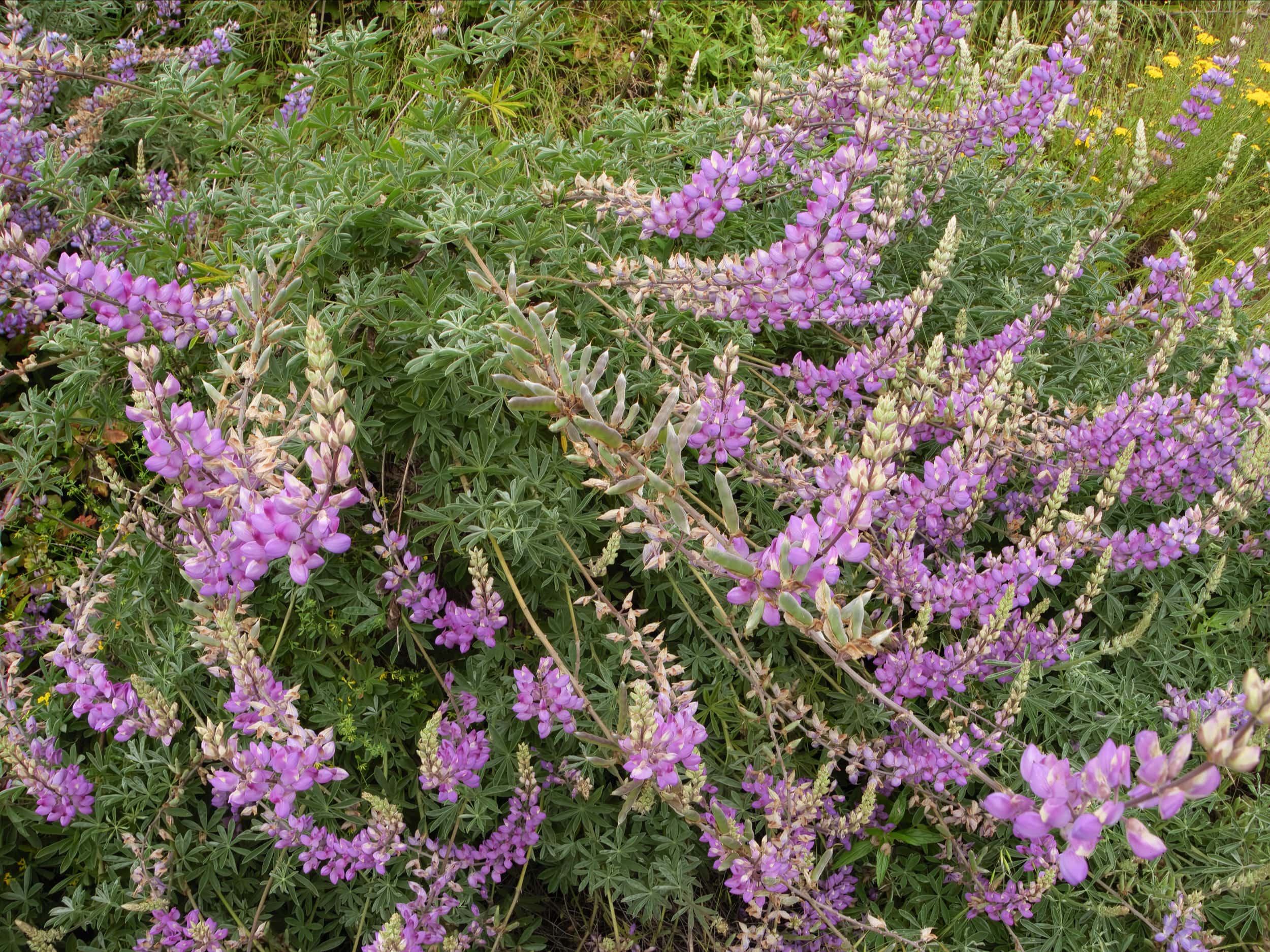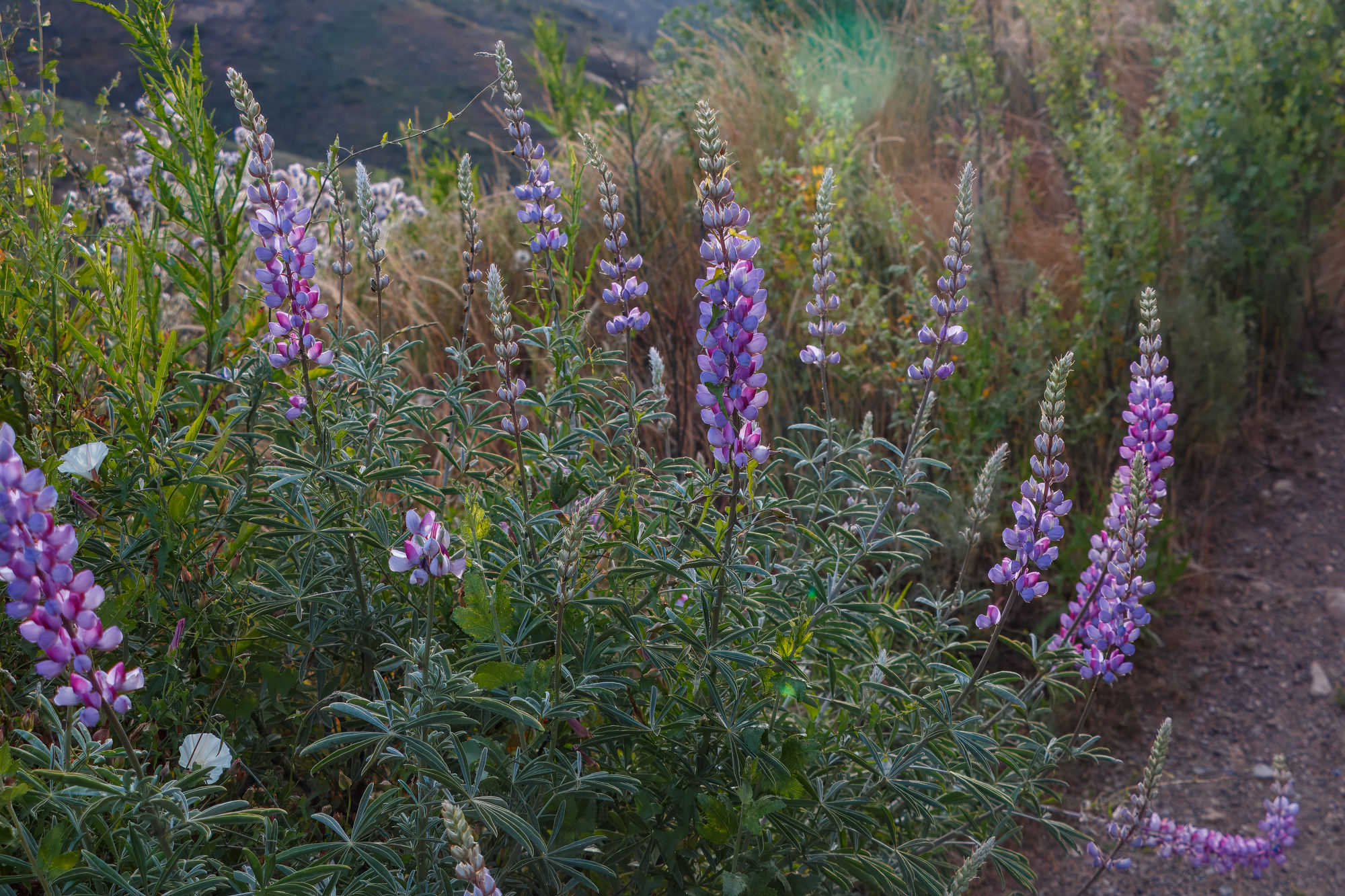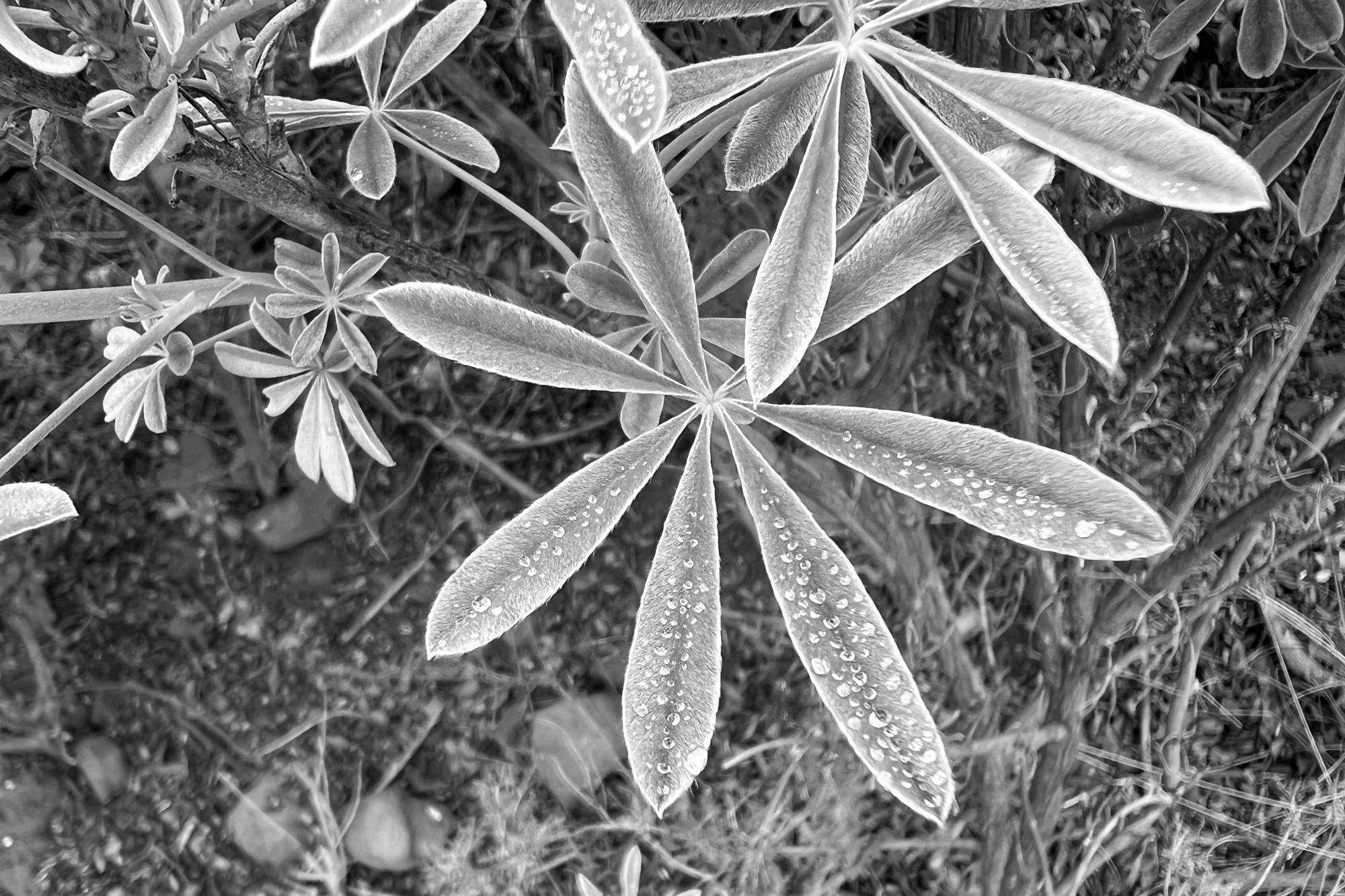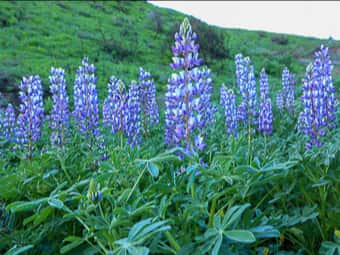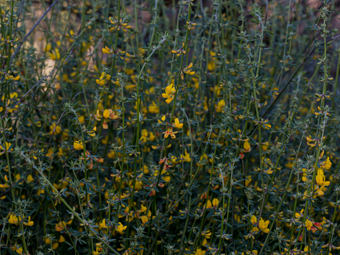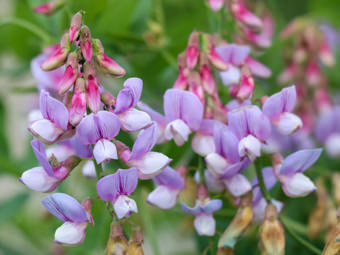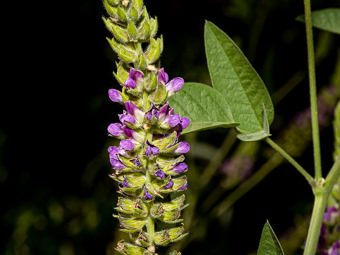Bush Lupine
- Lupinus longifolius
| Common Name(s): | Bush Lupine |
| Scientific Name: | Lupinus longifolius |
| Family: | Fabaceae (Legume) |
| Plant Type: | Shrub |
| Size: | up to 3 meters |
| Habitat: | coastal sage scrub, chaparral |
| Blooms: | February to May |
| Fire Response: | Germinate from Seed |
Bush Lupine - Lupinus longifolius commonly known as longleaf bush lupine, is a perennial shrub in the Fabaceae (pea) family. This native plant is found in many locations in the Santa Monica Mountains as well as other to coastal ranges and down into Baja California. Easy to distinguish from other lupines (size, trunk! and longer flowers) - it is one of my favorite plants to find along a trail. Preferred habitat is coastal sage scrub, chaparral, and sandy soils. Like other lupines, this plant improves the soil as it grows by nitrogen-fixing, meaning it helps enrich poor soils by hosting beneficial root bacteria (Rhizobia).
Blooming from February to May and producing tall spikes (racemes) of purple to blue flowers built on the classic lupine form: prominent banner, wings, and keel. I have seen this plant grow over 2 meters tall and nearly twice that in width. Looking to see this? The flowers provide nectar and pollen for native bees, butterflies, and occasionally hummingbirds. Two locations I prefer to see this - Sandstone Peak and Rancho Sierra Vista.
The leaves are the "palmately compound" [where multiple leaflets radiate from a single point at the end of the petiole/stem, resembling fingers on a hand.] Leaflet count varies from 5 to 10 long and narrow leaflets.
Response to Fire: Fire kills the plant. Seeds are deposited into the seed bank and are not germinated until fire related cues are present. Thanks to a hard coating on the seeds they can remain dormant for years until heat, smoke or scarification allow for germination. The plants ability as a nitrogen fixer, helps enrich fire-depleted soils.
Link to Calflora.net - the best source of this fascinating information.
Name Origin: "Supposed to be derived from lupus, 'a wolf,' because of the completely erroneous belief that these plants destroyed the fertility of the soil." The link has more information. longifolius for the long narrow leaflets.
Contributed by George Sherman
Featured Plants in the Fabaceae (Legume) Family:
Last modified: May 05 2025 10:09:01.
Number of Images: 17
Image Size Total: 11,825,541
References:
Wildflowers of the Santa Monica Mountains, by Milt McAuleyFlowering Plants: The Santa Monica Mountains, Coastal and Chaparral Regions of Southern California, by Nancy Dale
Chumash Ethnobotany: Plant Knowledge Among the Chumash People, by Jan Timbrook
Leaf Shapes Primer - Botanical Terms for Leaves: - Link

